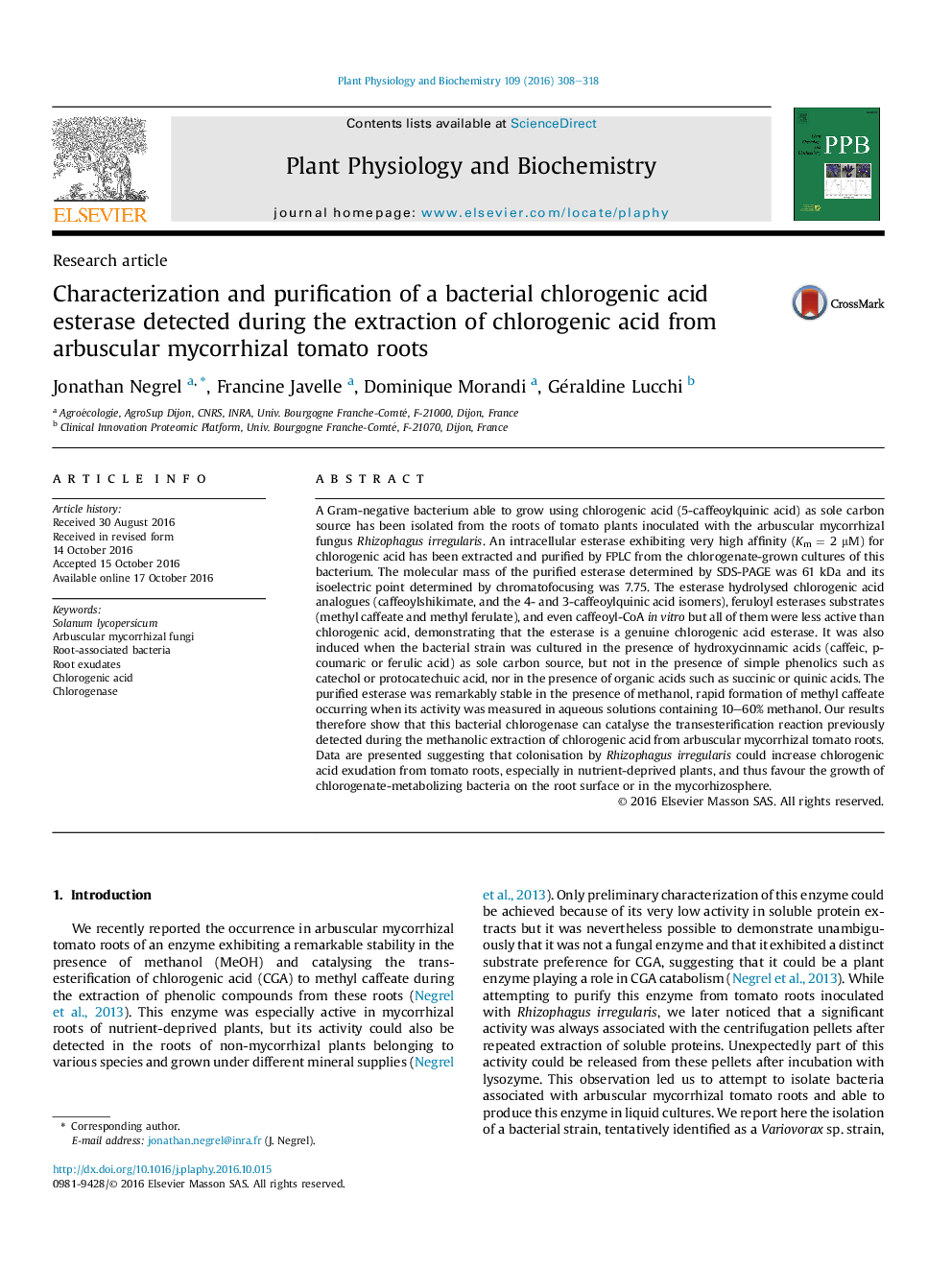| کد مقاله | کد نشریه | سال انتشار | مقاله انگلیسی | نسخه تمام متن |
|---|---|---|---|---|
| 5515648 | 1541912 | 2016 | 11 صفحه PDF | دانلود رایگان |
- A Gram-negative bacterium has been isolated from arbuscular mycorrhizal tomato roots.
- An intracellular chlorogenic acid esterase has been purified from this bacterium.
- It exhibits a remarkably high affinity for chlorogenic acid (Km = 2 μM).
- Colonisation of roots by Rhizophagus irregularis increases chlorogenic acid exudation.
- Chlorogenic acid exudation may favour growth of chlorogenate-metabolizing bacteria.
A Gram-negative bacterium able to grow using chlorogenic acid (5-caffeoylquinic acid) as sole carbon source has been isolated from the roots of tomato plants inoculated with the arbuscular mycorrhizal fungus Rhizophagus irregularis. An intracellular esterase exhibiting very high affinity (Km = 2 μM) for chlorogenic acid has been extracted and purified by FPLC from the chlorogenate-grown cultures of this bacterium. The molecular mass of the purified esterase determined by SDS-PAGE was 61 kDa and its isoelectric point determined by chromatofocusing was 7.75. The esterase hydrolysed chlorogenic acid analogues (caffeoylshikimate, and the 4- and 3-caffeoylquinic acid isomers), feruloyl esterases substrates (methyl caffeate and methyl ferulate), and even caffeoyl-CoA in vitro but all of them were less active than chlorogenic acid, demonstrating that the esterase is a genuine chlorogenic acid esterase. It was also induced when the bacterial strain was cultured in the presence of hydroxycinnamic acids (caffeic, p-coumaric or ferulic acid) as sole carbon source, but not in the presence of simple phenolics such as catechol or protocatechuic acid, nor in the presence of organic acids such as succinic or quinic acids. The purified esterase was remarkably stable in the presence of methanol, rapid formation of methyl caffeate occurring when its activity was measured in aqueous solutions containing 10-60% methanol. Our results therefore show that this bacterial chlorogenase can catalyse the transesterification reaction previously detected during the methanolic extraction of chlorogenic acid from arbuscular mycorrhizal tomato roots. Data are presented suggesting that colonisation by Rhizophagus irregularis could increase chlorogenic acid exudation from tomato roots, especially in nutrient-deprived plants, and thus favour the growth of chlorogenate-metabolizing bacteria on the root surface or in the mycorhizosphere.
Journal: Plant Physiology and Biochemistry - Volume 109, December 2016, Pages 308-318
